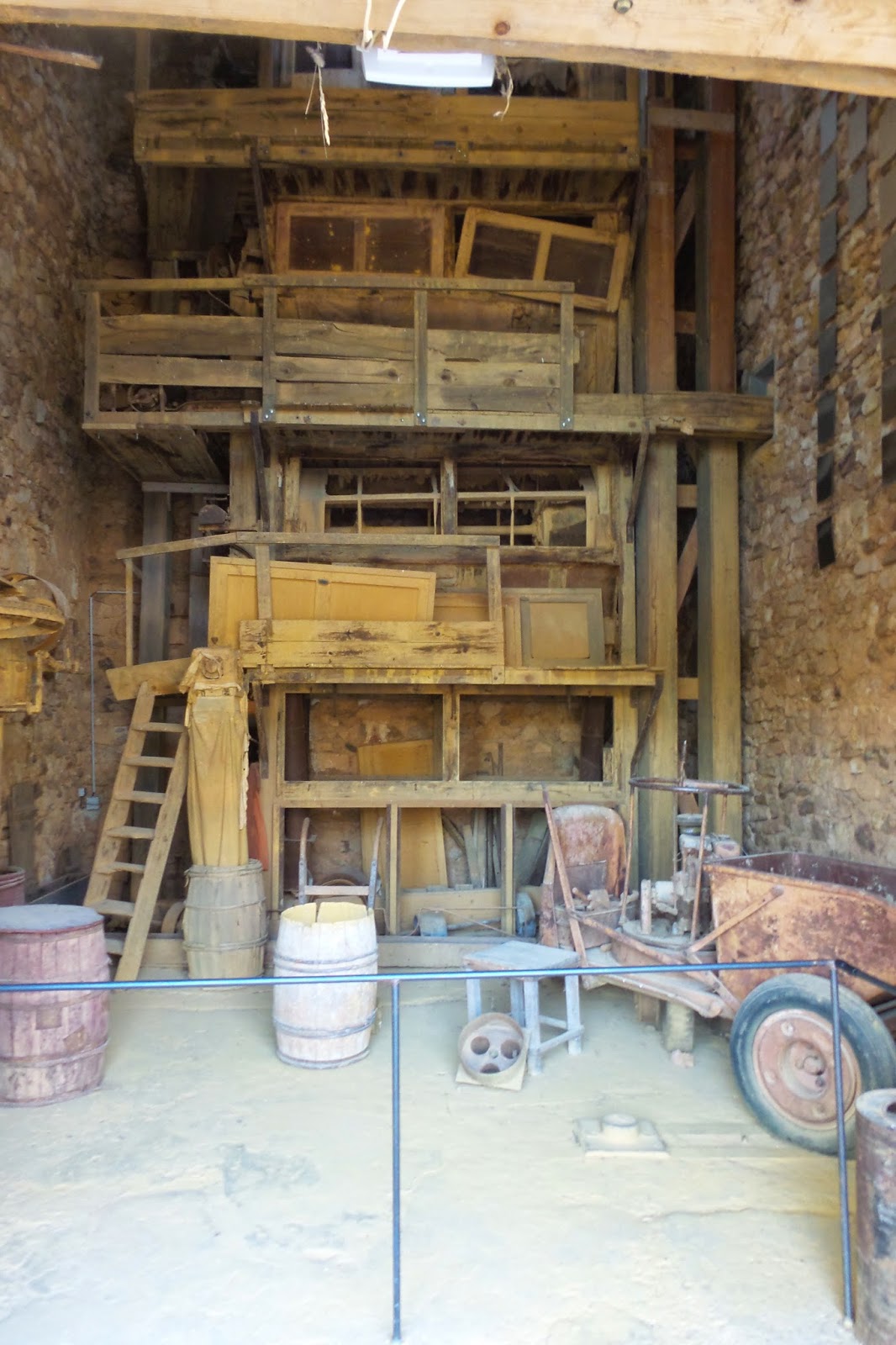I attended on Friday a special visit of the Ochre Mine of Bruoux and the Usine Mathieu, known as the conservatory of the Ochres for an afternoon in a world of coulours in Roussillon...
Ochre was mined in the region of Roussillon since the paleolithic time and industrialised from the mid 19th Century until the mid 20th C.
Its pigment has and is still used as a dye for paint but its industrilisation came for its clay that was used as a "skeleton" for the rubber industry.
Decline in the mid 20thC is explained by the discovery of the use of petrol waste for the rubber, a cheap and easy to find material.
Our visit started at the Mines de Bruoux.
Guided visit only in an amazing maze of 40km... (about 25 miles).
We grabbed our yellow building site hat, our little "tag number" (to check that noone go lost in the cave...) and followed the guide.
You'll walk with your guide in the moutain. The galleries are 15m (50ft) and were all carved naturally in the sandy cliff. At some point you'll feel like entering a colourfull cathedral.
You'll understand how man would carve the cliff from ground level to the top, using only small tools.
Visit lasts about 50mn, check the schedule for visit in English
- Visit only in group of Max 25 people ==> Wise to book in advance
- Dont forget your sweater as temperature in the mine is of 10°C all year round (50F)
Then on we went to the Conservatoire des Ocres / Usine Mathieu
At the begininng of the 20th C, Roussillon has over 20 factories employing more than a 1 000 persons to extract the pigment from the Ochres.
Today, the usine Mathieu is the only place that has been kept alive to tell the story.
A nice little path with signs explains you the journey of the extracted rock....
1 - The colouring :
The rock is yellow to red in colour. Naturally yellow, the ochre turn red by oxydation. So if you extract yellow rock and want it turned into red, you have 2 solutions. One: wait a few hundred years, or two: warm it up to speed the oxydation.
The first stop shows the "ochres bakery" were you would heat up your rocks until you hear a little "crack" that would advise you that red is ready... If you dont heat it up enough, the outside will turn red when the inside will remain yellow. Mix yellow and red and you'll get an orange....
2 - you crush the stone, like you would when doing Olive oil.
3 - You mix the powder with plenty of water. The flow will go into a filtration maze. Sand will progressivly be separated from the pigment.
4 - In the final filtration stage, the ochre pigment will be left to dry in a pond, and broken into 25kg stones that will dry under our summer sun.
5 - The pigment will be again crushed, and go through the last filtration system using silk fabric filter.
Just shove it in a bad and mail it...
Mining and filtration and final preparation would happen in the winter when water was around, letting the local plenty of time in Spring and Summer to deal with farming works.
At the Conservatory of the Ochres, you may also follow a workshop around Ochre paint. Whether you want to repaint your house (as the local have to do because of a town hall law that forbid them from using any other type of paint for the outside of their house), or reproduce a Van Gogh...
The Ochres Mines of Bruoux
 | |||||||
| 40km of maze in the Ochres Mine..... |
Conservatory of the Ochres / Usine Mathieu
 |
| Turning from Yellow to Red |
 |
| Crushing and washing the Ochres |
 |
| First stage of filtration, the sand will stay at the bottom of the tank |
 |
| Last filtration and drying of the ochre |
 |
| Separation of the Yellow pigment |
 |
| Ochres workshop room |











No comments:
Post a Comment